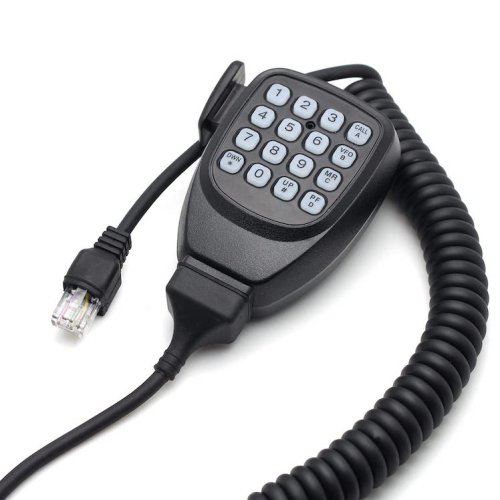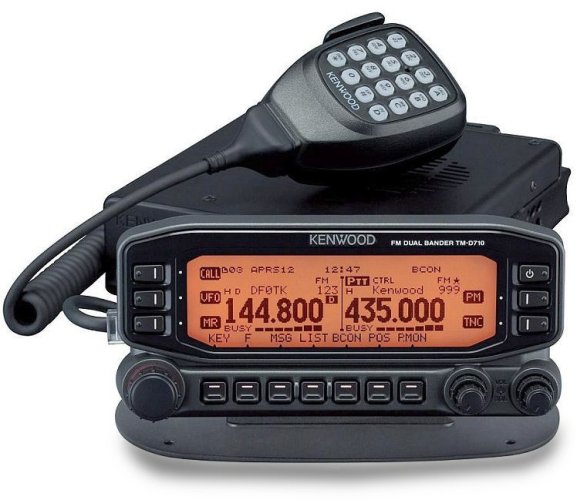The only thing I don't like about my Kenwood is that it's software interface is PC based. I had that when I bought the radio but I've long since switched over to Mac. So I can't program anything with my 71 currently. Not that I'd really know what I was doing anyway. But what about the dual transceiver part Ken was referring to? I can't find any details on that for the Kenwood. Only complaint I found during a search was the lack of "DTMF" what ever that is.
You are using an out of date browser. It may not display this or other websites correctly.
You should upgrade or use an alternative browser.
You should upgrade or use an alternative browser.
Yaesu FTM-300
- Thread starter Romer
- Start date
DaveInDenver
Rising Sun Ham Guru
Most radio software is Windows (or even DOS for some radios we keep around) based. RT Systems is what a lot of people buy for Yaesu radios and it's Windows only.The only thing I don't like about my Kenwood is that it's software interface is PC based. I had that when I bought the radio but I've long since switched over to Mac. So I can't program anything with my 71 currently. Not that I'd really know what I was doing anyway. But what about the dual transceiver part Ken was referring to? I can't find any details on that for the Kenwood. Only complaint I found during a search was the lack of "DTMF" what ever that is.
The FTM radios can read and write to an SD card that I believe you can import directly from it into the radio. So presumably this file could be edited on a Mac with any spreadsheet.
Chirp software runs on macOS and covers most typical radios, Kenwood or otherwise. You do lose a few features and file types from the Kenwood software but it covers 99% of what you need to do I'd think. I think Chirp can even now directly read some types of Kenwood programming files but I have not tried that yet. Where Chirp usually lacks compared to OEM software is setting features or memory organization like using groups or scanning, which can sometimes be hard to reverse engineer by the volunteer who did it for Chirp. It just depends. But for straight up editing memories it's usually just fine.
Where Chirp really excels is that it's universal for most radios so you can use just one software and it can pull in frequencies from common sources like Repeater Book or Radio Reference if you subscribe to those. This is a major benefit if you want to tailor your radio to a new location and want to get in the local repeaters with offsets and tones.
DTMF is Dual Tone Multi Frequency. It's what we old timers know as "touch tone" dialing. The TM-D710 can do DTMF. I don't really know what they're referring to. It's useful to access repeaters which sometimes require codes to control. The codes are a series of tones. It would sound like the string of tones you'd hear when you push the buttons on a telephone if you can imagine that. Pretty much all radios have been DTMF capable since the 1990s. It's usually a part of the microphone. It's what all those number buttons are there to do.

Dual transceiver means the radio can do receive and transmit on two frequencies at the same time. The TM-D710 does that, too. Although no radio can actually transmit on both exactly at the same time radios like the TM-D710, FTM-300, etc. can listen to two frequencies at the same time. They only have to pick a side to transmit on at a time and lock the other one out momentarily.
See how there's two frequencies? That's why that is. Now for most of us the second or B side is set to APRS frequency of 144.390 in the U.S. So that leaves the other side, primary or A usually, as the one we use to talk.

Your TM-D710 is in every way as good as a FTM-400, FTM-300, etc. with the exception of being able to do Yaesu System Fusion and it doesn't have the touch screen. It can do everything else on analog FM and APRS functions.
Last edited:
rover67
Rising Sun Member
(sorry to clutter the Yaesu content Romer) Corbet I use Kenwoon MCP-2A: https://www.kenwood.com/i/products/info/amateur/mcp_2a.html and also Chirp to program my TM-v71 works great but yes its windows stuff...... One option is https://bluemax49ers.com/ he can help you with software maybe. I only buy cables from him now. Not sure if he has a solution for MAC but you could ask him via email before purchasing any cables, he's super helpful.
Back to the 300
I installed the faceplate and also the microphone using zip ties for the microphone holder
Thinking of running the main unit under the rear seat. Still pondering.
I ran the wires from the engine bay back to the rear cab, but haven't hooked them up yet. Left the fuse out of the fuse holder for safety
I ordered the ditch light brackets from Victory offroad for the antenna mount



I installed the faceplate and also the microphone using zip ties for the microphone holder
Thinking of running the main unit under the rear seat. Still pondering.
I ran the wires from the engine bay back to the rear cab, but haven't hooked them up yet. Left the fuse out of the fuse holder for safety
I ordered the ditch light brackets from Victory offroad for the antenna mount
Looks good. Sorry to hijack your thread.
Thanks! No worriesLooks good. Sorry to hijack your thread.
Installed the main unit under the rear seat and used one of the coat hooks on the back wall to mount the Speaker. It works even without an antenna in my garage to my 200  Just need the bracket to install the antenna
Just need the bracket to install the antenna




DaveInDenver
Rising Sun Ham Guru
Nice, looks like a professional clean installation. 

Completed the install for the antenna and radio is now setup. Only able to test it so far 200 to Taco in the garage. Maybe I will run an errand tomorrow and have my wife LISTEN on a hand held and text me if she hears me 
I bought the Bracket from Victory 4x4 pictured above. I drilled out the hole with a 5/8" bit and then used a dremel to remove a little more until the antenna mount fit
I then installed the bracket without the antenna mount. Need to be careful here and remove one bolt, put the bracket on and hand tighten. Hold the bottom of the hood while removing the second bolt as it will shift. Slide the bracket over the 2nd hole and put the bolt back in.
Tighten both bolts and ensure the hood is aligned when down.
Put hood back up and feed cable and mount through back of hood and into the antenna mount. I bent it slightly to give a bit more room before installing it.
Install the mount and tighten it down. It looked like there was clearance underneath, but I added a piece of felt to the bottom of the mount as an extra precaution against scratching the paint.
Screw on the antenna
It doesn't obstruct anything up or down and it isn't in the way out the front windshield









I bought the Bracket from Victory 4x4 pictured above. I drilled out the hole with a 5/8" bit and then used a dremel to remove a little more until the antenna mount fit
I then installed the bracket without the antenna mount. Need to be careful here and remove one bolt, put the bracket on and hand tighten. Hold the bottom of the hood while removing the second bolt as it will shift. Slide the bracket over the 2nd hole and put the bolt back in.
Tighten both bolts and ensure the hood is aligned when down.
Put hood back up and feed cable and mount through back of hood and into the antenna mount. I bent it slightly to give a bit more room before installing it.
Install the mount and tighten it down. It looked like there was clearance underneath, but I added a piece of felt to the bottom of the mount as an extra precaution against scratching the paint.
Screw on the antenna
It doesn't obstruct anything up or down and it isn't in the way out the front windshield
